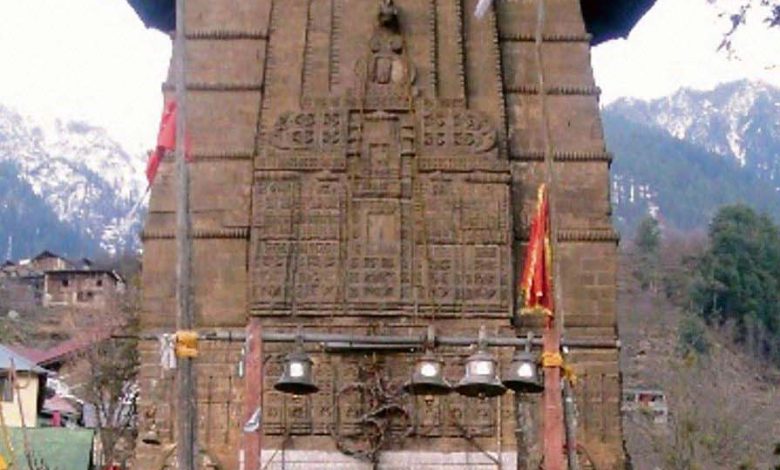Dharamsala: The temples of Bharmour amaze the tourists

Dharamshala: Bharmour is known the world over for its beautiful cluster of temples, the most prominent among them being the Manimahesh Temple dedicated to Lord Shiva. The complex of 84 temples consists of four important temples – Ganesha Temple, Lakshmi (Lakhan) Devi Temple, Narsingh Temple and Manimahesh Temple, which are collectively protected monuments under the Archaeological Survey of India (ASI). Due to their historical, cultural and archaeological significance, the temples have been collectively declared as protected monuments of national importance by the Centre. The Manimahesh Temple is built in the Pratihara style and stands majestically as the largest ‘shikhara’ temple in Bharmour. It is similar to the early temples of the Chamba town and was constructed by Sahil Varman around 920-940 AD. An engraved inscription dated 1417 AD is found on a small slab of white marble in the temple. The temple is built on an elevated platform made of rough stones, facing east. It is dedicated to Manimahesh (Shiva). The main deity worshipped here is a Shivalinga, which is housed inside the temple, besides statues of gods and goddesses, including a brass statue of Nandi, Durga with a child in her lap and Ganesha.
Manimahesh is also the main deity of the famous ‘Jatra’ (pilgrimage) and those who cannot make the arduous 26-km journey for a holy bath in the Manimahesh lake, worship here itself and return. Bharmour, formerly known as Brahmapura, was the ancient capital of the erstwhile Chamba princely state. Located in the Budhil valley, 59 km from Chamba town, Bharmour is known for its natural beauty and ancient temples. Popularly known as Shiva Bhoomi (abode of Lord Shiva), it is protected within the Pir-Panjal and Dhauladhar ranges between the Ravi and Chenab valleys. This land has abundant alpine pastures and provides home to nomadic herders, known as Gaddis.





